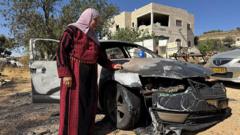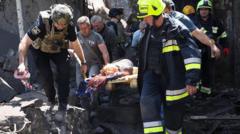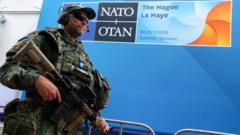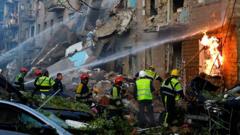In the wake of its brutal siege, Mariupol residents contest Russian assertions of recovery, sharing insights about severe shortages, propaganda in schools, and underground resistance efforts against the occupying forces.
Residents of Mariupol Challenge Russian Narratives Amid Ongoing Struggles
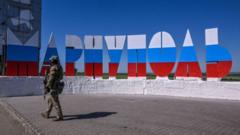
Residents of Mariupol Challenge Russian Narratives Amid Ongoing Struggles
Despite claims of normalization, residents reveal stark contrasts between Russian propaganda and the harsh realities of life in Mariupol.
Ukrainians living in Mariupol have vigorously disputed Russian claims that life in the occupied city has returned to normal, painting a grim picture of destruction and hardship. "What Russian state media portrays is pure fantasy," says John, an anonymous resident fearing retribution. Amid partial repairs along major streets meant for public consumption, hidden rubble and devastation persist just out of sight.
Three years after a siege that decimated the city, leaving a tragic death toll behind, many residents continue to occupy swathes of inadequately maintained structures, with 90% of residential areas reported as damaged. "It's true that some facades have been fixed up for the cameras, but around the bloc, the reality is stark—people live amidst decaying apartments," John adds, his experiences echoing that of Olha Onyshko, who fled the city late last year. "Mariupol was once lovely; now it's diseased. Very little has been done aside from clearing rubble," she states.
Reports from the city reveal that water is a major concern, with shortages leading to prolonged deprivation. "Water runs infrequently and arrives discolored," explains James, another resident hiding his identity. The isolation of fresh water sources complicates matters, as Serhii Orlov, the deputy mayor in exile, notes the key canal supplying the city was severely impacted, leaving residents with undrinkable water.
Still, life remains immovably challenging. With medicines hard to come by and steep prices for necessities, residents find themselves in dire situations. "Basic medications are scarce; for diabetics, insulin is costing more than they can afford," says James.
Compounding these struggles are pervasive educational programs instilling ideologies aligned with Russian narratives in local schools. Andrii Kozhushyna, who studied in an occupied Mariupol, groans, "Kids are being fed a steady diet of propaganda indicating that Ukrainian regions are now part of Russia." John, alongside others, fears that teachers who resist these new curricula risk intimidation or job loss in a chilling bid to reshape young minds.
Russian appropriation extends to public celebrations, as Mariupol's central square donned patriotic Russian symbols during major Soviet commemorations, igniting a sense of loss among many. Yet, a flicker of resistance persists. Secretive efforts to maintain Ukrainian identity are underway as groups discreetly display symbols of the nation on city walls and distribute leaflets imbued with messages of hope.
James too is part of this resistance, clandestinely documenting military movements to share with Ukrainian forces. He describes the life of perceived treachery and surveillance—every message carefully expunged from devices to avoid detection.
"Living under these conditions is an unending challenge," James elaborates, reflecting on the fear of being discovered. As discussions around potential peace agreements between Ukraine and Russia loom, voices from Mariupol express deep skepticism. "We refuse to concede our land, our history, our future—peace should not be bought at the expense of liberation," asserts John.
Through these narratives, an unfiltered glimpse into the beleaguered lives of Mariupol’s residents echoes the resilience and persistent struggle against an occupying force, underscoring that the journey towards normalcy remains fraught with trials yet to overcome.






